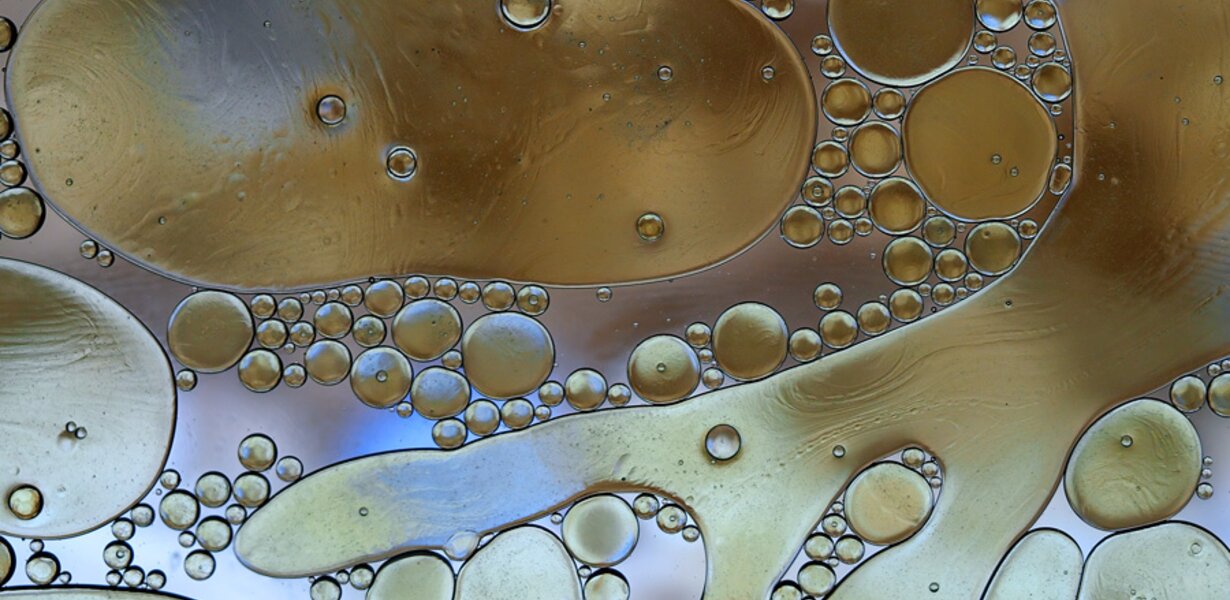Despite what you may have heard, fats are one of the key nutrients that our bodies need to function. Fat only becomes a problem when we eat too much of it. In any case, what’s important is to pay attention to the types of fats we eat. Oil instead of butter, fish instead of meat and nuts instead of cheese. We’re sure you’ve heard it all before. For decades, dietary recommendations have been that we should avoid eating too much fat - especially the saturated kinds, which are commonly found in animal products, and often described as "bad fats". But it’s a whole different ball game when it comes to unsaturated fatty acids, which are predominantly found in vegetable oils and are considered healthy. But what is the difference between saturated and unsaturated fats? And how do those notorious trans fatty acids fit into the equation?
The difference between saturated and unsaturated fats
Not all fats are created equal. The best way to understand this is to take a look at their structure on a molecular level. Fats or oils consist of triglycerides, which are composed of glycerol with three fatty acid molecules bound to it. These fatty acid molecules differ structurally in the number of double bonds and the chain length. Saturated fatty acids have no double bonds between the carbon atoms, while unsaturated fatty acids have at least one. These characteristics also influence whether a fat is solid or liquid at room temperature. Butter, for example, which is abundant in saturated fatty acids, is solid at room temperature whereas vegetable oils, which contain predominantly unsaturated fatty acids, tend to be liquid.
Unsaturated fatty acids - the good fats
Polyunsaturated fatty acids
In the 1970s, it was discovered that even severely overweight Inuit people (whose diet contains a high proportion of fish) had healthy hearts. Since then, omega-3 fatty acids from fish oil have been a very popular choice of supplement. A daily intake of the omega-3 fatty acids EPA (eicosapentaenoic acid) and DHA (docosahexaenoic acid) supports normal heart function. This positive effect is achieved with a daily intake of 250mg EPA and DHA - which the Inuit people were achieving naturally due to their high consumption of fish. The situation is quite different in developed western nations: we eat far too little fatty salmon, mackerel or herring and consequently find it difficult to reach the daily recommendations.
The good news is that fish is not the only source of omega-3 fatty acids. Virgin linseed oil is one of the best plant-based sources of omega-3 fatty acids, making it a great alternative. Unlike fish however, linseed oil does not contain EPA and DHA. Instead it contains alpha-linolenic acid, which the body can convert into EPA and DHA. The advantage: taking at least 2g of alpha-linolenic acid per day contributes to the maintenance of normal cholesterol levels. So a daily tablespoon of linseed oil should become a fixed ritual in everyday life, especially for vegetarians and vegans.
As well as omega-3 fatty acids, there are also omega-6 fatty acids to consider. An important example is linoleic acid, which can be found in hemp oil, sunflower oil or maize germ oil. If linoleic acid is consumed regularly (10g per day), it also contributes to the maintenance of a normal cholesterol level. If we compare the average intake of omega-6 fatty acids with that of omega-3, we see that the modern diet makes it almost impossible to suffer from an omega-6 deficiency. This is because animal products, especially meat, contain large amounts of this fatty acid. Most people consume too much omega-6 but too little omega-3. However, getting the ratio of these fatty acids right is of enormous importance. Experts recommend a ratio of omega-6 to omega-3 of 5:1.
Monounsaturated fatty acids
The group of omega-9 fatty acids completes the trio of the best-known unsaturated fatty acids. The most important example being the monounsaturated oleic acid, found in particularly high quantities in olive oil - a staple of the famous Mediterranean diet. Monounsaturated fatty acids also offer great advantages: replacing saturated fats in your diet with foods rich in oleic acid, for example, can contribute to maintaining normal cholesterol levels and thus support the cardiovascular system.
Saturated fatty acids - the bad fats
Saturated fatty acids are mainly found in animal foods such as butter, cream, sausage and cheese, but can also be found in some vegetable fats such as palm oil or coconut oil. Despite some controversial study results, it is still not sensible to give the green light for tucking into unlimited steak, juicy pork chops or burgers, as some of these saturated fatty acids have a negative effect on blood lipid levels and can thus increase the risk of coronary heart disease. A high total fat intake is also associated with an increased risk of obesity and dyslipidaemia. Unfortunately, large parts of the western population do not adhere to the current dietary recommendations. Saturated fatty acids account for the highest proportion of fat intake, 15% of total energy intake in women and 16% in men. Thus, both women and men significantly exceed the recommended guidelines for saturated fat intake of 7 - 10% of total energy intake.
Trans fatty acids - the really bad fats
Trans fatty acids did not get their bad reputation for nothing. They are special forms of unsaturated fatty acids that are mainly produced during the industrial hardening of vegetable oils. These hardened fats are primarily used in industrially produced foods, e.g. for fast food dishes, baked goods or for deep frying. When consumed in excess, trans fatty acids have a negative effect on blood lipid levels and increase the risk of coronary heart disease. Their use is permitted in Austria in small quantities, which is strictly regulated. Despite this very strict legal situation, increased levels of trans fats can be expected in certain foods such as doughnuts, Danish pastries or puff pastry products.
Michael Wäger, MSc
Team Leader & Expert Biogena Science Management









